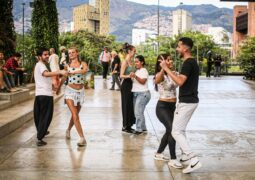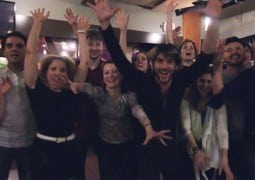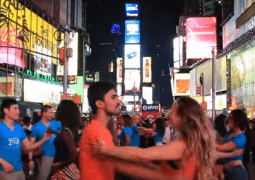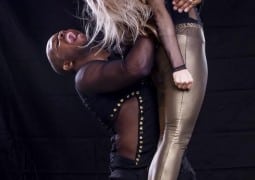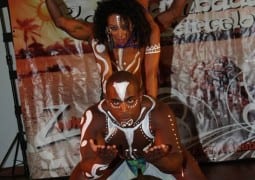Danielle Marie’s Friendly Hygiene Tips For All Zoukers

If you dance Zouk, you know one inevitable truth is that you will get sweaty… ridiculously sweaty. Your sweat will get on other people. Their sweat will get on you. It’s unavoidable. Everyone has surely had at least one memorable Zouk experience where dancing with a particular person was, shall we say, “unpleasant”. Whatever the reason, body odor, bad breath, hair odor, rough skin, being smashed into someone’s temple whilst they sweat profusely into your freshly washed hair…well, you get the picture. Not to mention, perhaps someone has (God forbid) had a bad experience with YOU. Sometimes we are not even aware of these things, but luckily there are precautions we can take. Dancing (especially Zouk) is one of the closest experiences you will have with another person (outside of the bedroom). So the least we can do is exercise courtesy and make sure the experience is comfortable for the people who will be pressed up against us for the next 6 hours.
Let’s break down the most common complaints:
- Sweat: Clean sweat does not stink. If you sweat a lot, rest assured knowing that if you’ve showered and deodorized before the class or social, you will likely not smell. If you are one who sweats profusely, bring a towel to wipe yourself off between dances, and perhaps an extra t-shirt (or 5). Carrying some deodorant with you in order to reapply as necessary is not a bad idea either.
- Breath: Even if you’ve brushed right before the class/social, the cardio combined with dehydration can make breath smell. To avoid this drink lots of water throughout the night and bring a pack of gum for added protection. Also try not to eat a heavy meal or a meal loaded with garlic right before a class/social.
- Hair: Try to wash hair before (and after) every social. Unwashed hair that has been sweated up, dried, and re-sweated can be quite foul, especially dancing such intimate dances like Zouk or Kizomba where your partner has their nose immersed in your mane for a good percentage of the time.
- Clothing: Wear a clean shirt, every time, no exceptions! News flash: Clothes that are left in the washer longer than 24 hours will smell like MILDEW, and no amount of fabric softener will cover up that smell!
After asking a random sampling of NY/NJ Zoukers (guys and girls) what their dance hygiene peeve or complaint is, we received a number of well-meant (and amusing) responses. Here are the results:
- “Certain girls tend to have a ‘vinegar’ smell, I think it might be because they were drinking the night before.”
- “I was taking a private with a Brazilian instructor and he said that he didn’t think girls from the US showered enough. He said that he takes one whiff and if there is smell he’s dancing the rest of the time in open position.”
- “There have been instances where my fellow leads have been downright pungent, there was the guy who always smelled like he had been in the gym all day and then was smoking weed in the sauna afterwards.”
- “As a leader your right hand holds the followers opposing shoulder blade. This puts you in direct contact with their underarm area and as a result when a follower’s under arm wetness and deodorant protection fails the leader’s wrist and forearm have a front row seat to FUNK. After dances I have to go to the bathroom and wash my hands, wrists and forearms.”
- “Pet peeve… When people’s clothes reek of that stale laundry smell that only gets worse as the dance floor heats up. Oddly enough I can deal with bad breath or stinky armpits WAY better than I can deal with stale laundry smell.”
- “I danced with a man who was a GREAT lead but smelled so bad that I did not want to dance with him again. “
- I remember this one time a guy wiped the sweat off of his forehead with his hand, wiped his hand on his leg, and then extended it to ask me to dance. I almost died, but reluctantly danced with him. I couldn’t wait until it was over so I could run and wash my hands.”
- “Someone who was literally LEAKING insisted on putting my arm around his neck as he spun under it.”
- “Last night this guy was scratching (down there) and then tried to reach for my hand.”
- “There was one guy who smelled like alcohol, but it was at an afternoon workshop. It was so bad that we were referring to him as ‘alcohol guy.’”
- “The worst is when I can smell what they had for dinner. Especially if they are burping up garlic in my face.”
- “I was at a congress and this girl sneezed into her hand as she was asking me to dance. My response to her was; ‘sure, right after you wash your hands.’”
- “One night I kept reapplying deodorant because I thought I had B.O., but then I realized it wasn’t me but this guy I danced with whose smell transferred onto me. WTF!?”
And there you have it folks. Straight from your peers. We all know that dance life can be hectic, especially when you’re at a congress bouncing from workshop to workshop, rehearsing, performing and then parties, and somehow you’re still supposed to find time to eat, sleep and shower. But being mindful of our own bodies and caring for ourselves will make the intimate experience of dance more pleasurable for all involved.
Tags Bad BreatheBrazilianCleanlinessClosenessHygieneShowerSweatTouchingzouk
About: Danielle Marie
- Previous Video: Phelipe Bastos & Daniela Sampaio’s Demo at the 2015 Recife Zouk Congress
- Next Video: Kamacho Leaves Copacabana For 2015 US Tour
You may also like...
Sorry - Comments are closed


